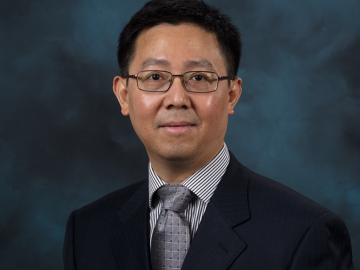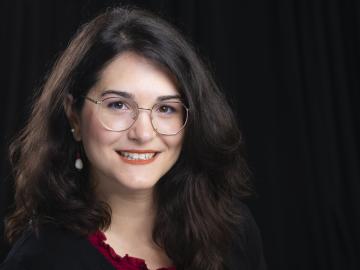
Filter News
Area of Research
- Advanced Manufacturing (2)
- Biology and Environment (8)
- Clean Energy (13)
- Electricity and Smart Grid (1)
- Functional Materials for Energy (2)
- Fusion and Fission (1)
- Fusion Energy (1)
- Isotopes (3)
- Materials (40)
- Materials Characterization (2)
- Materials for Computing (2)
- Materials Under Extremes (1)
- National Security (1)
- Neutron Science (6)
- Supercomputing (9)
News Type
News Topics
- (-) Materials (71)
- 3-D Printing/Advanced Manufacturing (52)
- Advanced Reactors (13)
- Artificial Intelligence (53)
- Big Data (25)
- Bioenergy (55)
- Biology (63)
- Biomedical (32)
- Biotechnology (10)
- Buildings (22)
- Chemical Sciences (32)
- Clean Water (14)
- Climate Change (54)
- Composites (10)
- Computer Science (97)
- Coronavirus (21)
- Critical Materials (2)
- Cybersecurity (20)
- Decarbonization (46)
- Education (1)
- Emergency (2)
- Energy Storage (43)
- Environment (114)
- Exascale Computing (26)
- Fossil Energy (4)
- Frontier (26)
- Fusion (37)
- Grid (26)
- High-Performance Computing (53)
- Hydropower (5)
- Irradiation (1)
- Isotopes (33)
- ITER (3)
- Machine Learning (23)
- Materials Science (63)
- Mathematics (5)
- Mercury (7)
- Microelectronics (2)
- Microscopy (28)
- Molten Salt (2)
- Nanotechnology (28)
- National Security (40)
- Net Zero (9)
- Neutron Science (59)
- Nuclear Energy (65)
- Partnerships (20)
- Physics (34)
- Polymers (13)
- Quantum Computing (22)
- Quantum Science (34)
- Renewable Energy (1)
- Security (13)
- Simulation (34)
- Software (1)
- Space Exploration (13)
- Summit (32)
- Sustainable Energy (51)
- Transformational Challenge Reactor (4)
- Transportation (37)
Media Contacts

Three scientists from the Department of Energy’s Oak Ridge National Laboratory have been elected fellows of the American Association for the Advancement of Science, or AAAS.

Jingsong Huang, a staff scientist at ORNL’s Center for Nanophase Materials Sciences, has been selected as an associate editor of Frontiers in Soft Matter.

Anne Campbell, an R&D associate in ORNL’s Materials Science and Technology Division since 2016, has been selected as an associate editor of the Journal of Nuclear Materials.

Eva Zarkadoula, an R&D staff member at ORNL’s Center for Nanophase Materials Sciences, has been appointed to the early career editorial board of Nuclear Materials and Energy.

The word “exotic” may not spark thoughts of uranium, but Tyler Spano’s investigations of exotic phases of uranium are bringing new knowledge to the nuclear nonproliferation industry.

Seven scientists at the Department of Energy’s Oak Ridge National Laboratory have been named Battelle Distinguished Inventors, in recognition of their obtaining 14 or more patents during their careers at the lab.

The U.S. Departments of Energy and Defense teamed up to create a series of weld filler materials that could dramatically improve high-strength steel repair in vehicles, bridges and pipelines.

Scientists have measured the highest toughness ever recorded, of any material, while investigating a metallic alloy made of chromium, cobalt and nickel, or CrCoNi.

Materials scientist Denise Antunes da Silva researches ways to reduce concrete’s embodied carbon in the Sustainable Building Materials Laboratory at ORNL, a research space dedicated to studying environmentally friendly building materials. Credit: ORNL, U.S. Dept. of Energy

Gang Seob “GS” Jung has known from the time he was in middle school that he was interested in science.


